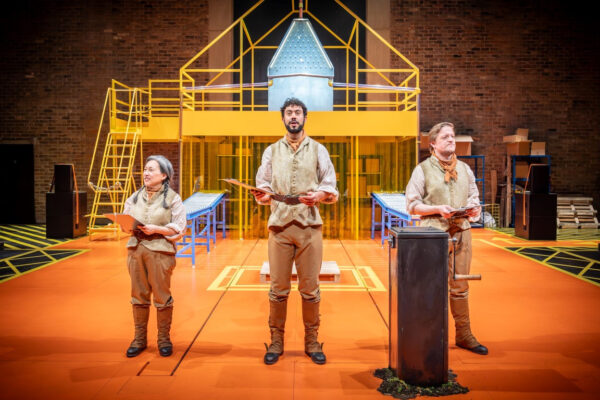“A while ago there was a meeting in which someone said ‘we’re the Northern Flowerhouse now’ as a response to the Northern Powerhouse, which we really liked,” muses Richard Scott as he ponders the genesis of Scouse Flowerhouse – a scheme to sow wildflowers across Liverpool’s urban environments.
“It was quite a friendly thing. For a lot of people the Northern Powerhouse is cold, clinical and economic, and it doesn’t mean very much to them – whereas this made people smile.”
The fruits of Scouse Flowerhouse’s labour certainly brighten up the place. Derelict, sad and unused Liverpool spaces have been lit up this spring and summer with riots of colours and texture: poppies, trefoils, campion and cornflowers aren’t simply easy on the eye, they’re great for insects, birds and other wildlife. Not to mention your common or garden scouser.
From Everton to Aintree, Toxteth and Croxteth, not to mention the city centre, Scouse Flowerhouse has being sowing wild flowers – and more besides – in areas across the city that don’t boast as much greenery as leafier parts of the city.
Richard is Director of the National Wildflower Centre at the Eden Project, formerly of this parish, delivering national conservation projects. He is also behind the England’s Wildflower Flagship, for the Liverpool and Manchester Tale of Two Cities Project, which has transformed derelict areas in both cities into multicoloured wildlife havens. And what he doesn’t know about soil inversion isn’t worth knowing.
Richard explains what Scouse Flowerhouse is: “It’s a personal take on bringing wildflowers to Liverpool, which we have been doing for a long time, but it’s a refreshing new personal twist to it.

“We’ve always been about bringing the countryside to the town. We’re in the biggest extinction crisis probably since the dinosaurs in terms of species lost, and combined with the climate emergency people just don’t know what to do.
“The Amazon is burning and everything seems to be under attack. This project seems to show that by doing very simple things we can help.”
Another important aspect is the humble park that have seen a resurgence in popularity since various Covid lockdowns over the last 18 months.
This project seems to show that by doing very simple things we can help.
“The lockdown showed that people needed parks in a way we had perhaps forgotten about,” argues Richard.
“The Victorians created a lot of these parks in urban areas and in many ways we as a modern society have decided this was mad, because why would you give the land to green spaces? Now we know why we need them.”

Despite a renewed appreciation for the outdoors and green spaces, Covid has affected the scale of Scouse Flowerhouse’s ambitions, at least for now.
Lockdown showed that people needed parks in a way we had perhaps forgotten about.
“We’re quite fortunate because we could keep going. The unfortunate thing was we could’ve done much bigger community sewings, but you just weren’t allowed. We have had some lovely sewings though, for example, in Woolton Hall Park and Sefton Park with local schools, because they could keep in their bubbles.
“It will get easier over time. It’s nice to imagine big community sewings, because it’s quite fun when you get big groups of people together. We’re careful because the seeds are precious and we need to sew them well, but it’s wonderful to have long lines of people.”

Community partners and schools are a key part of the replanting. And the project has wider advantages of linking communities across Liverpool.
“When you can sew to music and you’ve got good food together, it’s something to be celebrated. We’ve had some great live music: our band the Wildflower Trio come out and play whilst we’re all sewing. We also have homebaked pies from a local bakery in Anfield.
“It’s wonderful to link these things together. It’s a real cultural thing. Wildflowers are as much a part of culture as buildings and heritage. They’ve slipped away recently though and there’s been a huge loss in people’s experience to see them.”

Richard is looking forward though. For him the rewilding of Liverpool’s green spaces has only just begun.
“As we take this forward, the exciting thing is for people to be involved in the sewings and the pleasure you get from them. Also just seeing and celebrating the flowers as they bloom this year. We’d love to hear people’s reactions to the work we’ve done, and maybe suggestions of where they could happen next.
“Over the past 2 years in Liverpool we’ve brought them to prominent places, like Everton Park, which features the best views across the city. We’re excited to bring them to Sefton Park this year as well. It’s wonderful to be able to do that and show that you can do this in cities.
Wildflowers are as much a part of culture as buildings and heritage.
“Coming up we want to go to places like Anfield cemetery and some of these big spaces like the Grant Gardens near Everton Park. Some of these spaces just need re-awakening.
“Grant Garden is actually an old cemetery with thousands of people buried there, so it seems only proper to plant flowers there. It’s nice that we can enrich some of these places. In a way these are green deserts.”
Scouse Flowerhouse may offer some huge changes in the Liverpool landscape, but for Richard its the subtler effects that make the difference.
“It’s the basic thing of cheering people up. That thing about the connection with nature and people. Liverpool has a very special place within that story. I think we get really excited about making the most of that. It’s also interesting what other people can suggest.
“It’s like a never ending story.”
• Find out where you can visit Scouse Flowerhouse locations here
Written by Jamie Tichborne; images courtesy of Richard Scott / Scouse Flowerhouse








